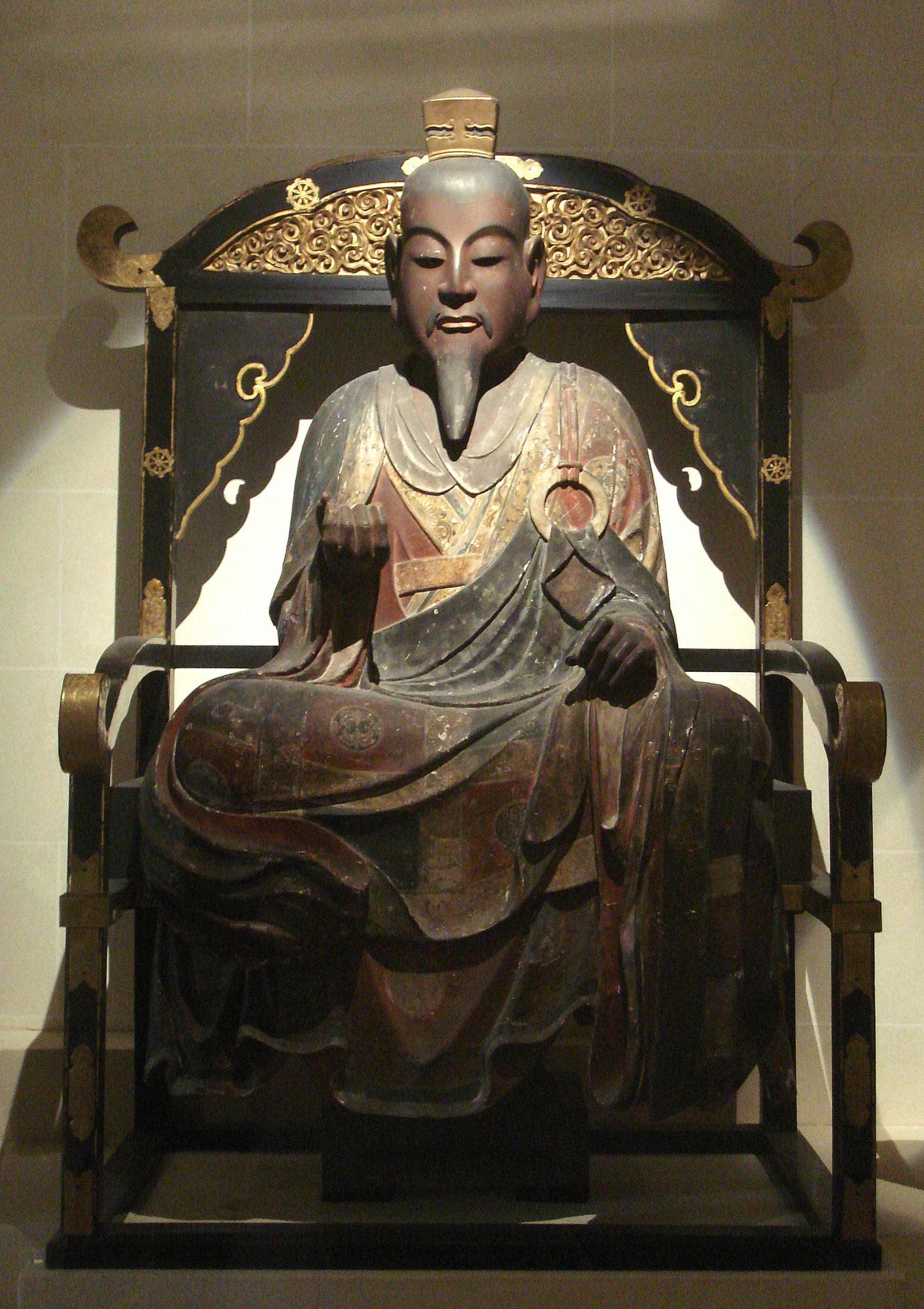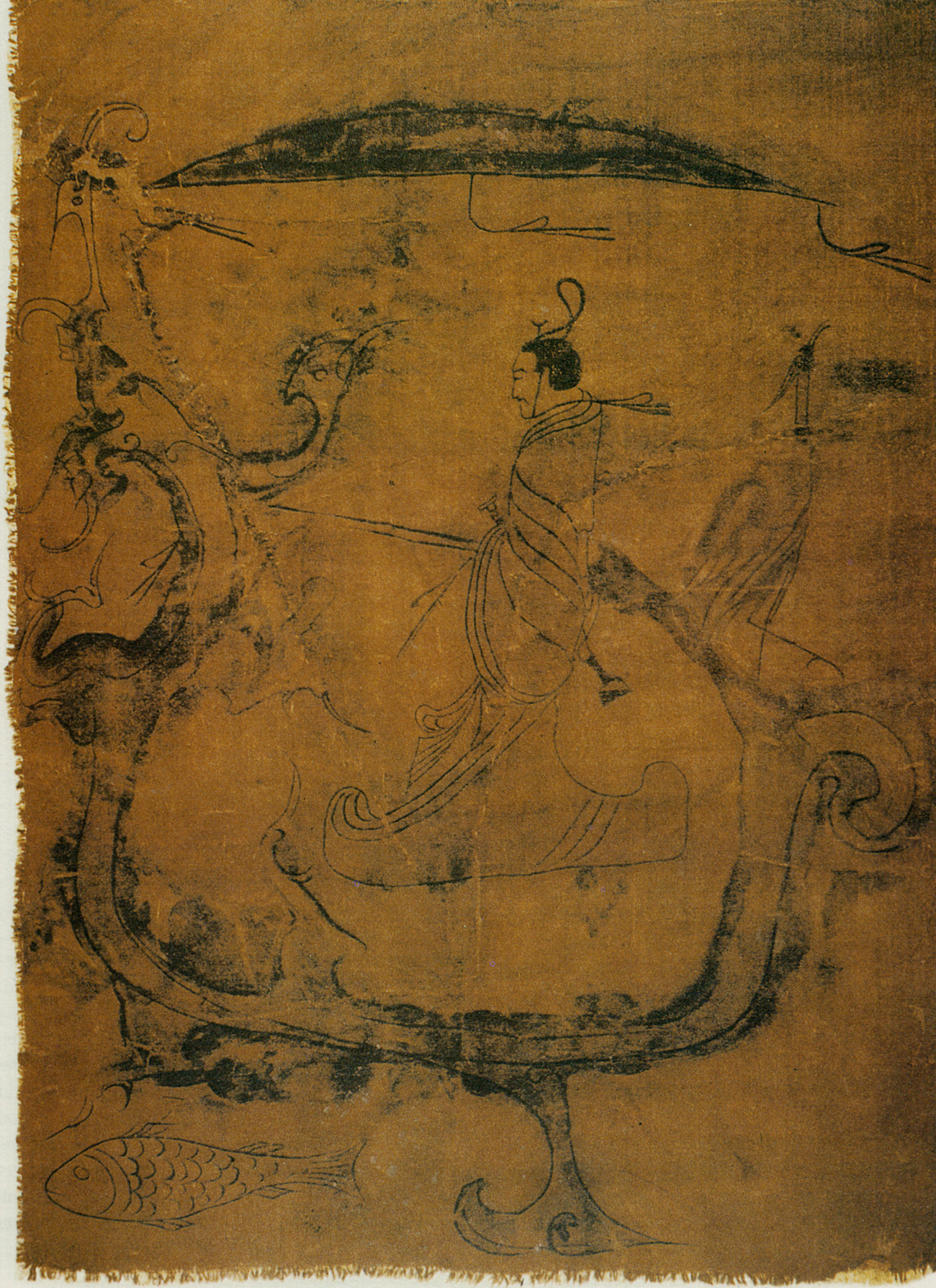|
Daruma-ji
Daruma-ji ( ja, 達磨寺, lit=Daruma Temple, links=no, also called Daruma-dera) is a Zen Buddhist temple in the city of Ōji in the Kitakatsuragi District, Nara Prefecture, Japan and is one of the 28 historical Sites of Prince Shōtoku. History The founding of the temple is associated with an event recorded in the 8th century work '' Nihon Shoki''. In Book XXII, Prince Shōtoku met a man in December 613. The man was starving, and Prince Shōtoku tried to feed him and give him aid, but the man died of hunger and Prince Shōtoku had a ''kofun'' built for him. Days later, Prince Shōtoku declared that the man was a sage and had a messenger inspect the tomb, which was undisturbed but empty when opened. In ''Nihon Shoki'' the sage is unnamed, but was later attributed as Daruma ( ja, 達磨, lit=Bodhidharma, links=no). The Daruma-ji temple was built at the ''kofun'' in the early 13th century during the Kamakura period. The temple was razed in the early 14th century by Buddhists w ... [...More Info...] [...Related Items...] OR: [Wikipedia] [Google] [Baidu] |
Ōji, Nara
is a town located in Kitakatsuragi District, Nara Prefecture, Japan. As of April 1, 2015, the town has an estimated population of 22,791 and 9,771 households, and a density of around 3,000 people per km². The total area is 7.00 km². Cultural sites *Daruma-ji Transportation Rail *West Japan Railway Company **Kansai Main Line (Yamatoji Line): Ōji Station **Wakayama Line: Oji Station - Hatakeda Station *Kintetsu Railway **Ikoma Line: Oji Station **Tawaramoto Line: Shin-Ōji Station Road *Japan National Route 25 *Japan National Route 168 is a national highway of Japan connecting Shingū, Wakayama and Hirakata, Osaka file:Hirakata Park.jpg, 260px, Hirakata Park is a Cities of Japan, city in northeastern Osaka Prefecture, Japan. , the city had an estimated population of 397, ... References External links * Town of Ōji Towns in Nara Prefecture {{Nara-geo-stub ... [...More Info...] [...Related Items...] OR: [Wikipedia] [Google] [Baidu] |
Historical Sites Of Prince Shōtoku
The Historical Sites of Prince Shōtoku (聖徳太子御遺跡霊場, ''Shōtoku taishi goiseki reijō'') are a group of 28 Buddhist temples in Japan related to the life of Prince Shōtoku , also known as or , was a semi-legendary regent and a politician of the Asuka period in Japan who served under Empress Suiko. He was the son of Emperor Yōmei and his consort, Princess Anahobe no Hashihito, who was also Yōmei's younger half- .... Directory {{DEFAULTSORT:Historical Sites of Prince Shotoku Buddhist temples in Nara Prefecture Buddhist temples in Osaka Prefecture Buddhist temples in Kyoto Prefecture Buddhist temples in Hyōgo Prefecture Buddhist pilgrimage sites in Japan Religious buildings and structures in Kyoto Prefecture Prince Shōtoku Buddhism in the Asuka period ... [...More Info...] [...Related Items...] OR: [Wikipedia] [Google] [Baidu] |
Nara Prefecture
is a prefecture of Japan located in the Kansai region of Honshu. Nara Prefecture has a population of 1,321,805 and has a geographic area of . Nara Prefecture borders Kyoto Prefecture to the north, Osaka Prefecture to the northwest, Wakayama Prefecture to the southwest, and Mie Prefecture to the east. Nara is the capital and largest city of Nara Prefecture, with other major cities including Kashihara, Ikoma, and Yamatokōriyama. Nara Prefecture is located in the center of the Kii Peninsula on Japan's Pacific Ocean coast, and is one of only eight landlocked prefectures. Nara Prefecture has the distinction of having more UNESCO World Heritage listings than any other prefecture in Japan. History Nara Prefecture region is considered one of the oldest regions in Japan, having been in existence for thousands of years, and is widely viewed as the Japanese cradle of civilization. Like Kyoto, Nara was one of Imperial Japan's earliest capital cities. The current form of Nara Prefec ... [...More Info...] [...Related Items...] OR: [Wikipedia] [Google] [Baidu] |
Nara National Museum
The is one of the pre-eminent national art museums in Japan. Introduction The Nara National Museum is located in Nara, Nara, Nara, which was the capital of Japan from 710 to 784. Katayama Tōkuma (1854–1917) designed the original building, which is a representative Western-style building of the Meiji period and has been designated an Important Cultural Properties of Japan, Important Cultural Property in Japan. Junzō Yoshimura (1908–1997) designed a supplemental building in 1973. Collections The museum is noted for its collection of Buddhist art, including images, sculpture, and altar articles. The museum houses and displays works of art belonging to temples and shrines in the Nara, Nara, Nara area. Properties kept in the Shōsōin repository are exhibited each year in the autumn. In the museum's collection is the 12th-century , 11th or 12th-century mandala Jōdo mandara-zu, and the 9th-century sculpture of the seated Bhaisajyaguru, Buddha Yakushi. History The Nara Natio ... [...More Info...] [...Related Items...] OR: [Wikipedia] [Google] [Baidu] |
Silk Painting
Silk painting refers to paintings on silk. They are a traditional way of painting in Asia. Methods vary, but using traditional supplies of 100% silk fabric, stretched in a frame, and applying textile paints or dyes are the beginnings of an amazing creative process in making textile art and the process National styles China One of the earliest surviving Chinese silk paintings is a 2-metre long T-shaped painting, dated from around 165 BCE, from the Mawangdui. However, painting on silk quickly gave way to painting on other supports. Silk painting employs gutta as a resist, allowing fine patterns to be achieved. The Tibetan Thangka is the best known religious painting. Vietnam Ancient period Silk painting (Tranh lụa) was a traditional artisanry in Vietnam. There have been some old silk paintings, e.g. portraits of Nguyễn Trãi, Phùng Khắc Khoan, Trịnh Đình Kiên, Phan Huy Cẩn, Phan Huy Ích, Phan Huy Thực, and Phan Huy Vịnh dated from Lê and Nguyễn dynas ... [...More Info...] [...Related Items...] OR: [Wikipedia] [Google] [Baidu] |
Bizen Ware
is a type of Japanese pottery traditionally from Bizen province, presently a part of Okayama prefecture. History Bizen ware was traditionally produced in and around the village of Imbe in Bizen province, from where it received its name. It is therefore also known as Imbe or Inbe ware. It has ties to Sue pottery from the Heian period in the 6th century, and made its appearance during the Kamakura period of the 14th century. Bizen was considered one of the Six Ancient Kilns by the scholar Koyama Fujio. It experienced its peak during the Momoyama period of the 16th century. During the Edo period, the Ikeda lords of the Okayama domain continued to support the kilns and gave special privileges to families who operated them, such as the Kimura, Mori, Kaneshige, Oae, Tongu, and Terami. The rustic quality of Bizen made it popular for use in Japanese tea ceremony. Ware of the early phase is called old Bizen style (古備前派 ''Ko-Bizen-ha''). After modernisation began during the ... [...More Info...] [...Related Items...] OR: [Wikipedia] [Google] [Baidu] |
Important Cultural Property (Japan)
An The term is often shortened into just is an item officially classified as Tangible Cultural Property by the Japanese government's Agency for Cultural Affairs ( Ministry of Education, Culture, Sports, Science and Technology) and judged to be of particular importance to the history, arts, and culture of the Japanese people. Classification of Cultural Properties To protect the cultural heritage of Japan, the Law for the Protection of Cultural Properties was created as a under which important items are appropriated as Cultural Properties,In this article, capitals indicate an official designation as opposed to a simple, unofficial definition, e.g "Cultural Properties" as opposed to "cultural properties". thus imposing restrictions to their alteration, repair and export. Besides the "designation system", there exists a , which guarantees a lower level of protection and support to Registered Cultural Properties. Cultural Properties are classified according to their nature. It ... [...More Info...] [...Related Items...] OR: [Wikipedia] [Google] [Baidu] |
Bakufu
, officially , was the title of the military dictators of Japan during most of the period spanning from 1185 to 1868. Nominally appointed by the Emperor, shoguns were usually the de facto rulers of the country, though during part of the Kamakura period, shoguns were themselves figureheads, with real power in hands of the Shikken of the Hōjō clan. The office of shogun was in practice hereditary, though over the course of the history of Japan several different clans held the position. The title was originally held by military commanders during Heian period in the eighth and ninth centuries. When Minamoto no Yoritomo gained political ascendency over Japan in 1185, the title was revived to regularize his position, making him the first shogun in the usually understood sense. The shogun's officials were collectively referred to as the ; they were the ones who carried out the actual duties of administration, while the Imperial court retained only nominal authority.Beasley, William G ... [...More Info...] [...Related Items...] OR: [Wikipedia] [Google] [Baidu] |
Muromachi Period
The is a division of Japanese history running from approximately 1336 to 1573. The period marks the governance of the Muromachi or Ashikaga shogunate (''Muromachi bakufu'' or ''Ashikaga bakufu''), which was officially established in 1338 by the first Muromachi ''shōgun'', Ashikaga Takauji, two years after the brief Kenmu Restoration (1333–1336) of imperial rule was brought to a close. The period ended in 1573 when the 15th and last shogun of this line, Ashikaga Yoshiaki, was driven out of the capital in Kyoto by Oda Nobunaga. From a cultural perspective, the period can be divided into the Kitayama and Higashiyama cultures (later 15th – early 16th centuries). The early years from 1336 to 1392 of the Muromachi period are known as the '' Nanboku-chō'' or Northern and Southern Court period. This period is marked by the continued resistance of the supporters of Emperor Go-Daigo, the emperor behind the Kenmu Restoration. The Sengoku period or Warring States period, which begi ... [...More Info...] [...Related Items...] OR: [Wikipedia] [Google] [Baidu] |
Tangible Cultural Property (Japan)
A as defined by the Japanese government's Law for the Protection of Cultural Properties is a part of the Cultural Properties of Japan, Cultural PropertiesIn this article, capitals indicate an official designation as opposed to a simple definition, e.g "Cultural Properties" as opposed to "cultural properties". of high historical or artistic value such as structures, paintings, sculptures, handicrafts, calligraphic works, ancient books, historic documents, archeological artifacts and other such items created in Japan.Despite the official definition, some Cultural Properties of Japan were created in China, Korea or other countries. See for example the Letter from Duarte de Menezez to Toyotomi Hideyoshi, a National Treasures of Japan, National Treasure, pictured below and made in India. All objects which are not structures are called "works of fine arts and crafts. Considered by the Japanese government to be, like all Cultural Properties, a precious legacy of the Japanese people, they ... [...More Info...] [...Related Items...] OR: [Wikipedia] [Google] [Baidu] |
Cultural Property (Japan)
A is administered by the Japanese government's Agency for Cultural Affairs (Ministry of Education, Culture, Sports, Science and Technology), and includes tangible properties (structures and works of art or craft); intangible properties (performing arts and craft techniques); folk properties both tangible and intangible; monuments historic, scenic and natural; cultural landscapes; and groups of traditional buildings. Buried properties and conservation techniques are also protected. Together these cultural properties are to be preserved and utilized as the heritage of the Japanese people. Not all Cultural Properties of Japan were created in Japan; some are from China, Korea or other countries. See for example the letter from Duarte de Menezez to Toyotomi Hideyoshi, pictured above, a National Treasure originating in India. In total, some 857 Important Cultural Properties are Chinese in origin, 96 from Korea, 27 from the West, and three from elsewhere. To protect Japan's cultu ... [...More Info...] [...Related Items...] OR: [Wikipedia] [Google] [Baidu] |








